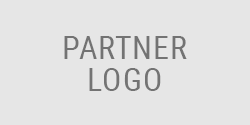How to Break Bad Money Habits

Everyone has a set of bad money habits that they just can’t seem to break. Sometimes we’re aware of these habits and just don’t know how to shake them. Sometimes we try to justify them to ourselves and others. Sometimes we just know something’s amiss, but aren’t sure what it is.
But whatever you think of these habits, the truth is always this: they cost you money. Sometimes a little money and sometimes a lot. Money you don’t need to be losing.
Which leads us to the big question: how exactly do you break these bad money habits? For that matter, how do you break habits at all?
New York Times reporter Charles Duhigg pondered that very question and the result was the book The Power of Habit: Why We Do What We Do in Life and Business. In the book, Duhigg identifies how and why we create habits and – most importantly for us – how to break those habits by replacing them with healthier/more productive/more desirable habits. The key is to recognize the habit loop.
What is a Habit Loop?
The habit loop is a cycle that includes three basic steps: the cue, the routine and the reward.
The cue is the trigger that initiates the routine. The routine, which is the element of the loop most closely associated with the habit, leads to the reward. And if the reward is (for lack of a better word) rewarding enough, then the cue will become tied to the reward, ensuring that the cycle will begin anew the next time that trigger occurs.
Here's an example of a habit:
Every day at work, I take a break at 10:30am, buy a candy bar and a soda from the vending machine, and sit by the little duck pond across the street from my office.
- The cue: It's your 10:30 break time
- The routine: You buy a candy bar and a soda, then sit by the duck pond
- The reward: You feel relaxed and recharged, ready to face the rest of the day
The key to breaking a bad money habit is to understand these steps and how they relate to one another.
Steps to Overcome Bad Money Habits
Step 1: Identify the routine
What do you want to change? What’s that thing you can’t stop yourself from doing no matter how much you beat yourself up?
The routine is typically the problematic part of the habit loop. The reward is usually positive, and the cue may be pretty benign. It's the space between the cue and the reward that we want to change.
Without being too hard on yourself, isolate the routine you want to change and why you want to change it. In the example above, maybe the candy bar and the soda are a problem because you want to lose weight, or you simply feel like it's a waste of money.
Step 2: Experiment with the routine
One of the biggest obstacles to overcoming a habit is identifying the real reward that your bad behavior is meant to earn. Because often the reward is not quite what we think it is.
In this scenario, you may think that the candy and soda break time habit calms you down, or helps get you through the morning by giving you something to look forward. Maybe you think the sugar is giving you the energy to make it to lunch.
Why exactly you're so compelled to continue you on with the bad habit comes down to the relationship between the routine and the reward. We think the entire habit is necessary to successfully provide the desired reward every time, but that may not be the case. And you can better understand that relationship by experimenting with the routine.
Back to the duck pond: what if you bought the candy bar, but not the soda? What if you bought the soda, but not the candy bar? What if you bought neither? What if you bought both but went to the break room instead of the duck pond?
Playing around with the details of the routine can help you understand what element of the habit is actually giving you the good reward. (Maybe it was just the ducks all along?)
Step 3: Isolate the cue
Of course, not all habits are neatly scheduled into your day. In fact, it may not be immediate obvious what causes you to return to a bad habit over and over.
Habitual cues generally fall into one of five categories: location, time, emotional state, other people, and immediately preceding action. If you find yourself doing something over and over again there’s usually a trigger to be found somewhere in one of those five areas.
In our example the cue is pretty easy to spot: it's 10:30 and you're at work. But in a lot of cases the cue isn’t quite so obvious. In order to root out the cue, every time you find yourself engaged in your habit, ask yourself these five questions:
- Where are you?
- What time is it?
- What’s your emotional state?
- Who else is around?
- What happened immediately before you felt the urge?
Over time, you’ll start to spot patterns and those patterns will help you identify the cue that leads to your habit. Maybe you only smoke around your friend Dave. Maybe you online shop when you’re stressed out. Whatever the habit, eventually you’ll pick up on the cue.
Step 4: Create a new routine
Once you understand why you do what you do, you need to replace the bad habit with a healthier routine. That doesn’t happen overnight. In fact, it doesn’t happen at all if you don’t work on it. Because habits tend to be deeply ingrained, it takes repetition and commitment to build new, healthier replacement habits.
Let’s say you discover that you’ve been eating out so often lately because you simply don’t like being alone in your apartment in the evening all that much. It doesn't really have much to do with eating or socializing, so you don’t need to go out to eat with a friend in order to satisfy the craving. Instead, you build a new routine: three nights a week you put your gym membership to good use and workout, one night a week you go to the library and browse for a new book and one night you organize a happy hour with your co-workers.
Keep in mind that your new routine won’t take unless you stick with it. And your old habit isn’t going away all that easily. But if you make a commitment and stick with it for a few weeks, you’ll find that the cues that once drove you towards a negative habit now drive you towards a positive one.
Our problems with debt are often the result of a series of bad money habits. They’re hard to break, but the reward for doing so is more money in your pocket and a very real sense of accomplishment. So give it a try! The only thing you have to lose are bad habits.
And if you need help understanding which financial habits are costing you the most money, MMI offers free financial counseling. We're available online and over the phone, 24/7, so don't hesitate to reach out if credit card debt and other financial pressures are weighing you down.
















